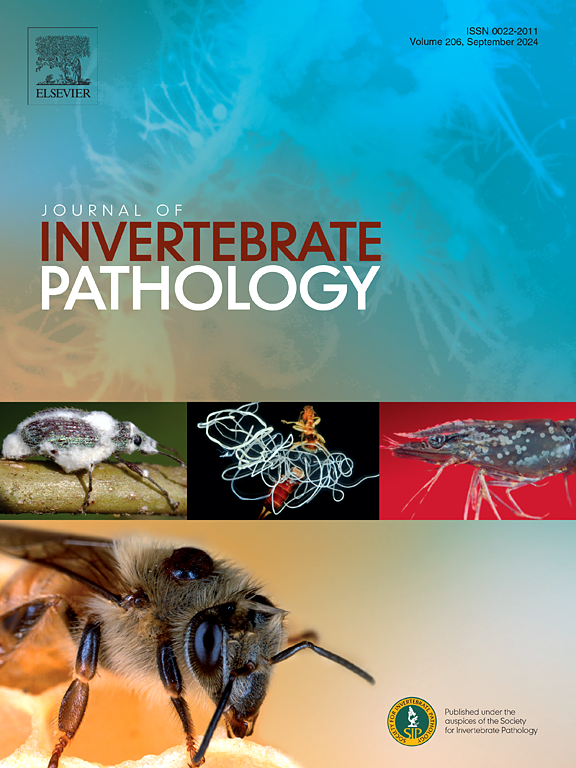转录组学分析揭示了microrna在凡纳滨对虾(Penaeus vannamei)肝外核孢子虫感染中的作用
IF 2.4
3区 生物学
Q1 ZOOLOGY
引用次数: 0
摘要
肝外核孢子虫(EHP)是一种感染南美对虾的微孢子虫寄生虫。为了研究EHP感染对虾microRNA (miRNA)表达的影响,我们对EHP感染前后凡纳滨对虾miRNA表达谱进行了深度测序。共有86种mirna在感染EHP的南美扁虫中差异表达,潜在靶向超过15,600个涉及蛋白质结合、细胞成分、细胞内部分和生物调控的基因。此外,靶基因在包括内吞作用和凋亡在内的几个KEGG通路中显著富集。此外,研究发现,miR-315-x、miR-92-y和miR-317-z等差异表达的mirna参与EHP感染过程中的多个调控过程,影响生长、免疫调节和代谢平衡。这些发现反映了对虾在应对EHP感染时通过miRNA表达协调防御反应和代谢调节的机制。该研究为虾对微孢子虫感染的分子反应机制提供了新的见解。本文章由计算机程序翻译,如有差异,请以英文原文为准。

Transcriptomic analysis reveals the role of MicroRNAs during Ecytonucleospora hepatopenaei infection in shrimp (Penaeus vannamei)
Ecytonucleospora hepatopenaei (EHP) is a microsporidian parasite that infects Penaeus vannamei. To study the effects of EHP infection on shrimp microRNA (miRNA) expression, we deep-sequenced the miRNA expression profiles of P. vannamei before and after EHP infection. A total of 86 miRNAs were differentially expressed in P. vannamei infected by EHP, potentially targeting over 15,600 genes involved in protein binding, cellular components, intracellular parts, and biological regulation. Moreover, the target genes were significantly enriched in several KEGG pathways, including Endocytosis and Apoptosis. Additionally, the study found that differentially expressed miRNAs, such as miR-315-x, miR-92-y, and miR-317-z, are involved in multiple regulatory processes during EHP infection, influencing growth, immune regulation, and metabolic balance. These findings reflect the mechanisms by which shrimp coordinate their defense response and metabolic regulation through miRNA expression in response to EHP infection. The study provides new insights into the molecular mechanisms of shrimp response to microsporidian infection.
求助全文
通过发布文献求助,成功后即可免费获取论文全文。
去求助
来源期刊
CiteScore
6.10
自引率
5.90%
发文量
94
审稿时长
1 months
期刊介绍:
The Journal of Invertebrate Pathology presents original research articles and notes on the induction and pathogenesis of diseases of invertebrates, including the suppression of diseases in beneficial species, and the use of diseases in controlling undesirable species. In addition, the journal publishes the results of physiological, morphological, genetic, immunological and ecological studies as related to the etiologic agents of diseases of invertebrates.
The Journal of Invertebrate Pathology is the adopted journal of the Society for Invertebrate Pathology, and is available to SIP members at a special reduced price.

 求助内容:
求助内容: 应助结果提醒方式:
应助结果提醒方式:


